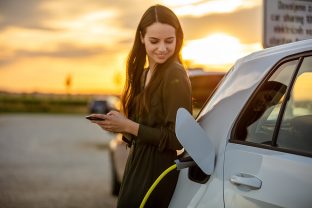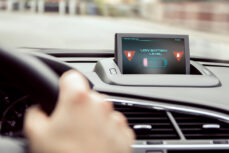10 misconceptions about LPG

Risk of explosion
The most common misconception about LPG is that it is dangerous and that using it carries an increased risk of explosion. However, although some such accidents occurred at the end of the 1990s, manufacturers have since incorporated safety devices that make this type of incident very rare.
Underground car parks and tunnels are prohibited
LPG is so rarely used in the UK that there are not as many regulations as there are in countries like France. In Europe, you might see signs prohibiting LPG vehicles from driving through tunnels or underground car parks. These signs refer to “LPG vehicles without valves”, but the vast majority of LPG vehicles have been equipped with a valve since 2001. The ban is, therefore, no longer necessary.
Note: the Channel Tunnel is subject to English regulations.
Stations are rare
In the UK, there are only 368 filling stations offering LPG for sale to the public, with many of these being due to be phased out by 2024. Many of these stations have replaced LPG provision with EV charging points.
Autonomy is low
Like any other vehicle, the range of an LPG vehicle is defined by the capacity of its tank. The range of an LPG car is about the same as that of a petrol car, averaging 280 miles. In addition, most LPG cars are bi-fuel, which means that they can be switched to petrol mode if necessary, thus extending the vehicle’s range even further.
The tank takes up a lot of space in the boot
This may have been true for the first LPG vehicle models. Since then, manufacturers have improved their designs to produce cars with boots that are just as spacious as petrol and diesel cars.
The vehicles are expensive to buy
LPG cars cost an average of £1,775 more than petrol models. This extra cost is offset by the price of fuel, as LPG is about half the price of petrol or diesel.
Converting to LPG is expensive and complicated
Converting to LPG must be done by a professional, but it is not complicated. The price for conversion by a garage owner can be as much as £2,000. The investment is quickly recouped through fuel savings.
Difficulties with resale
Although LPG vehicles are somewhat tarnished by their bad reputation, alternative vehicles are worth considering, especially in the context of rising oil prices.
Maintenance is more expensive and complicated
Modern LPG vehicles have similar maintenance requirements to other cars, regardless of their engine. The cost is also similar, except for very old models.
It is not as environmentally friendly as people say
Although it is still a fossil fuel, LPG is significantly more environmentally friendly than petrol and diesel. It emits an average of 12% fewer carbon emissions than oil.
Are you convinced of the advantages of LPG? All that remains is for you to make a choice: even if the supply of LPG vehicles still seems limited, the development of this fuel at a European level is encouraging manufacturers to offer more models.














